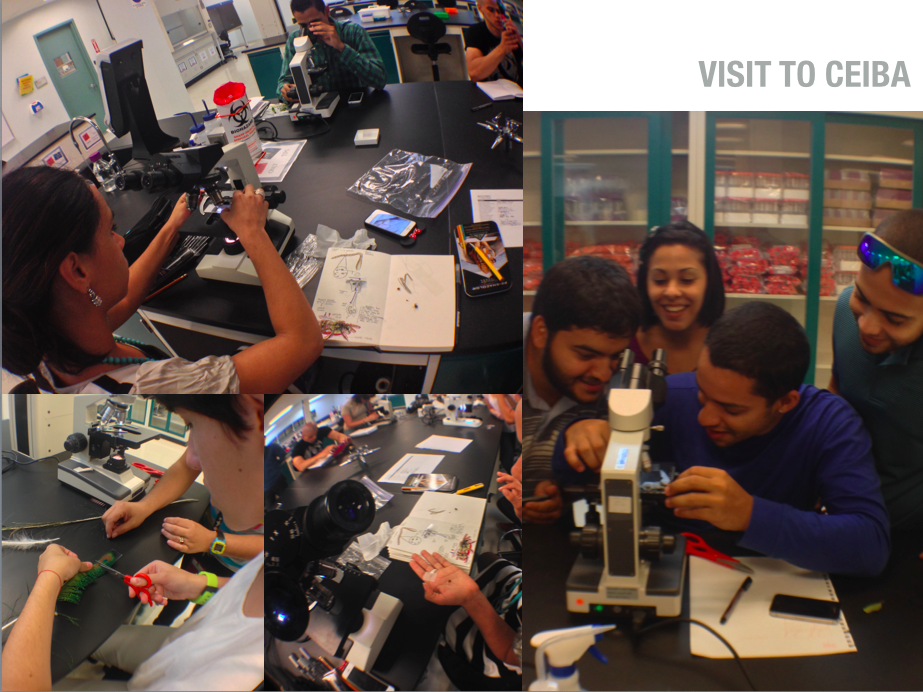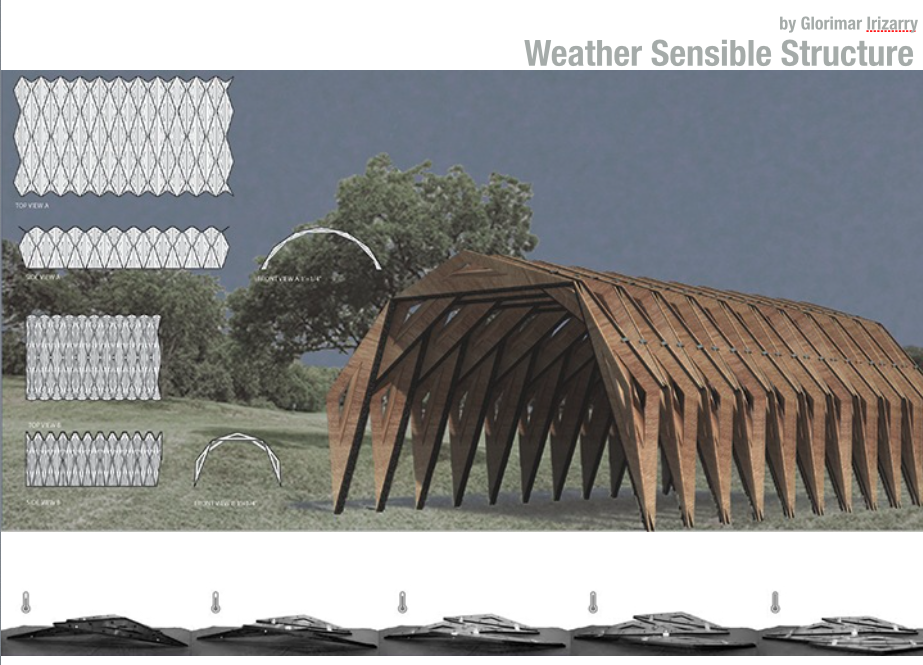Growth of a Research and Design Studio
Submitted by Edlyn García La Torre on
Buildings and designs are appearing to have more curves, and thanks to technology and digital programs that allow parametric design, architecture appears to be more organic. The constant search for blurring the line between the natural environment and the built environment is increasingly evident. However, it cannot be based on image, that subjective label that dominates our culture when thinking about architecture. In a lecture given at Berkeley by Janine Benyus, founder of the Biomimicry Institute, she emphasizes the importance in making design decisions. Why the curve, that angle, orientation, materials, or systems? Certainly, the technology allows everything that our mind can imagine and more, but control, methodology, experiments and processes are important for the result to promote and propose efficiency.
Then, how you begin? To start with the origin of things is always the best idea, then observe any variations, developments and convergences in order to determine the model to be used to emulate their intelligence or inspiration for the design that proposes a solution. Looking to nature as the mentor, to choose a model and measure their efficiency is what is known as biomimicry. This practice is not new, just the opposite. Thanks to advances in technology, we have the tools to look closely and analyze selected models. The interdisciplinary aspect of this branch is crucial, not only among architects and engineers, but also scientists like biologists, physicists and chemists among others.
It is not enough a building as an object without a relation to its environment in order to highlight and be the center of attention. We must regain the sensitivity to nature and look how what we build can respond to their environment, with a scientific approach. In the School of Architecture at the Catholic University of Puerto Rico, Biotectónica, a research and design studio emerged and is focused on the search for bio-inspired solutions for improved resilience to natural disasters. In first year design courses and recently a fourth year design course, we have incorporated methodologies that allow students to rethink the structures and develop them.
 In recent semesters of the first year, the behavior of certain organisms were selected or recommended and students studied and parameters of response to natural hazards such as hurricanes, earthquakes and tsunamis were documented. The image presents a process of the student, Isaac Torres’s work which shows intelligence and a spiral structural resilience of the coconut pal tree, due to its resistance to hurricane winds and its structure allows flexibility and strength to the threat of a hurricane.
In recent semesters of the first year, the behavior of certain organisms were selected or recommended and students studied and parameters of response to natural hazards such as hurricanes, earthquakes and tsunamis were documented. The image presents a process of the student, Isaac Torres’s work which shows intelligence and a spiral structural resilience of the coconut pal tree, due to its resistance to hurricane winds and its structure allows flexibility and strength to the threat of a hurricane.
As first year students develop skills to conceptualize, abstract, document and diagram natural behaviors, it has been a growth experience, not only for students but for the Studio also, since the applied methodologies during the semesters have helped formalize and re-structure the Studio’s purpose. A fourth natural threat that we are already seeing its immediate effects on the island, drought, has been incorporated in the Studio and began to provide interesting results. In the image, a collage of the students and their preliminary presentations that respond to three threats: earthquakes, tsunami and drought.
For the design course ARAD 401, we included a research project within the PUCPR, Bioclimatic Skins. The project is studying adaptations of certain organism in arid and tropical humid climates in local forests in Puerto Rico. Among them, Olimpia School Forest and Guánica Dry Forest were incorporated in the design course. This semester was different due the physical visit to the site, the process of letting students choose the organisms that respond to the area with the assistance of consultant biologists such as Prof. Edwin Carrasquillo from the Dept. of Biology of PUCPR and Dr. Gretchen Diaz from CienciaPR in collaboration with Casa Pueblo at the time.
After the visits, the students went to CEIBA (Center for Teaching and Research in Biotechnology Agricultural Biotechnology) for the use of microscopes to observe up close the structures and patterns that could help inform on local climate adaptation with the samples.
In addition, with the help of Dr. Mauricio Correa from UPR RUM Applied Optimization Group, students were taught to design their experiments and how to organize the data. Together with the research project, Bioclimatic Skins, SEM images were processed (Scanning Electro Magnetic) in the RUM Microscopy Center with the help of Jose Almodovar, for a more detailed perspective of the structures. The results of the first phase of research and development of prototypes produced some projects that merit to be continued. Among them is the project of the architecture student and biologist, Glorimar Irizarry who recently published an article of her work in Materiability, a material database from the ETH University in Zurich. This project collects response from various organisms to changes in atmospheric pressure, moisture content and temperature. These parameters are difficult to emulate but what is interesting about Glorimar’s project is that achieves to exceed conceptualizing a single environmental stimulus and managed to combine at least two in the same prototype. Therein lies the strength of the project, and if experiments and prototypes can be continued, future applications to other scales and structures to respond to changes in temperature and increase in humidity can be achieved. By the passive intelligence in proposed materials and how they are combined in the system, you can start building structures that respond to the immediate climate, and by several stimuli just as nature encourages the multi-functionality in the same material, herein lies the challenge of emulating their intelligence.
Projects within the workshop are being developed for future publications, therefore scientific collaborations will gain more strength with Biotectónica Research and Design Studio within the School of Architecture. We will soon start with the contribution to the database of the Biomimicry Institute, AskNature, and we hope to continue the development and structure of our methodologies. Science in architecture is not a trend; it is essential for the development and innovation of the profession and is here to stay.
We thank our partners:
- Fablab School of Architecture PUCPR
- College of Science PUCPR Ponce Campus
- CEIBA: Center for Education in Biotechnology and Agricultural Biotechnology Research
- Casa Pueblo
- Inmatteria
- Ciencia Puerto Rico
- UPR RUM Applied Optimization Group
- Dept. of Biology Microscopy Center
- Ask Nature














